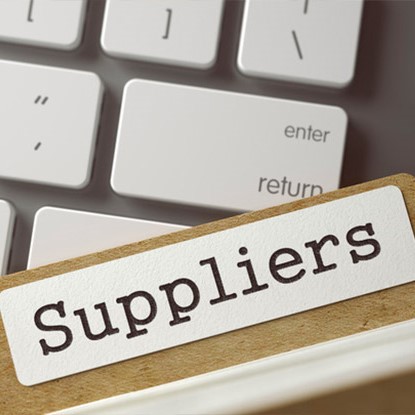Vendor Onboarding a.k.a Supplier Onboarding: What Is It?


Discover the value of vendor onboarding done right. Learn about key strategies, challenges, and innovative solutions to optimize your supplier management processes and enhance operational efficiency.
In today’s fast-paced business environment, building strong relationships with reliable vendors is crucial for success. But simply signing a contract isn’t enough. Vendor onboarding, the process of integrating new vendors into your organization, lays the groundwork for a smooth and productive collaboration.
We will demystify vendor onboarding, exploring its key steps, best practices, and the benefits it delivers. Whether you’re a seasoned procurement professional or just starting out, this guide will equip you with the knowledge and tools to create a seamless and successful onboarding experience for your vendors.
By the end of this article, you’ll have a clear understanding of how to build strong vendor relationships from the outset, setting the stage for long-term success and mutual benefit.

Unlock the value of InvoiceAction to experience seamless integration and automation to onboard vendors faster and more efficiently. Get started now!
Supplier onboarding, while essential for establishing effective supplier relationships, can present several potential challenges for organizations:
One of the primary challenges in supplier onboarding is ensuring the accuracy and completeness of supplier data. Incomplete or inaccurate information provided by suppliers can lead to delays in the onboarding process and errors in procurement activities.
It’s crucial for businesses to implement robust validation processes to verify supplier information and documentation.
Meeting regulatory compliance requirements poses a significant challenge in supplier onboarding. Organizations need to ensure that suppliers adhere to various legal and regulatory standards, such as tax compliance, environmental regulations, labor laws, and industry-specific regulations.
Failure to comply with regulatory requirements can result in penalties, legal liabilities, and reputational damage.
Conducting thorough vendor due diligence is essential for mitigating risks associated with supplier relationships. However, performing comprehensive background checks, financial assessments, and risk evaluations for each supplier can be time-consuming and resource-intensive.
All businesses must strike a balance between thorough due diligence and operational efficiency to streamline the onboarding process without compromising risk management practices.
RELATED: Purchase-to-Pay Automation for Manufacturing
Managing a diverse network of suppliers with varying requirements and standards can pose challenges in supplier onboarding. Each supplier may have different onboarding procedures, documentation requirements, and communication preferences, adding complexity to the process.

Standardizing onboarding procedures and leveraging technology platforms can help streamline interactions with suppliers and ensure consistency across the supplier network.
Integrating supplier onboarding processes with existing technology platforms, such as enterprise resource planning (ERP) systems, procurement software, and vendor management systems, can be complex.
Ensuring seamless data exchange, interoperability, and system compatibility requires careful planning, coordination, and technical expertise. To succeed, businesses need to invest in technology infrastructure and resources to optimize supplier onboarding processes and enhance operational efficiency.
Addressing these challenges requires a proactive approach, effective risk management strategies, and continuous improvement efforts. By implementing vendor onboarding standardized procedures, leveraging technology solutions, and fostering collaboration with suppliers, organizations can overcome obstacles in supplier onboarding and build robust supplier relationships that drive value and innovation.
Key components of vendor onboarding include vendor qualification and selection criteria, documentation requirements, contract negotiation, and setting up vendor accounts in internal systems.
Each component plays a crucial role in ensuring that vendors are properly vetted, contracts are negotiated effectively, and vendor accounts are set up accurately to facilitate smooth transactions.
By addressing these key components comprehensively, you can establish strong vendor relationships, mitigate risks, and optimize procurement processes.

Contact Us for an in-depth
product tour!
Vendor qualification and selection criteria involve assessing vendors based on factors such as reputation, reliability, quality of products or services, pricing, and compliance with regulatory requirements.
Establishing clear vendor qualification and selection criteria helps organizations identify vendors that align with their needs, values, and operational standards.
By carefully evaluating vendors against predetermined criteria, organizations can make informed decisions and choose suppliers that best meet their requirements and expectations.
Documentation requirements and contract negotiation involve gathering necessary paperwork, such as vendor agreements, service-level agreements (SLAs), and legal documents, and negotiating terms and conditions with vendors.
Clear documentation and well-negotiated contracts help protect the interests of both parties, clarify expectations, and mitigate potential disputes or misunderstandings.
Effective contract negotiation ensures that all parties understand their rights and obligations, fostering transparency and accountability in vendor relationships.
RELATED: Best Practices for Online Invoice Payment Processing
Setting up vendor accounts and profiles in internal systems entails creating vendor records, entering relevant information, and configuring payment and communication preferences.
This process ensures that vendors can seamlessly interact with the organization, submit invoices, receive payments, and communicate regarding orders or services.
Properly configured vendor accounts in internal systems streamline procurement workflows, enhance data accuracy, and facilitate efficient collaboration between the organization and its vendors.
Optimize Your Vendor Onboarding Experience
Harness the power of OrderAction to simplify document processing, automate order processing, and streamline communication with vendors. Transform your onboarding process for greater efficiency and accuracy. Try it out today!
Book a demo now
Implementing best practices for vendor onboarding involves establishing clear communication channels, setting expectations, and defining roles and responsibilities from the outset. It’s essential to develop standardized onboarding processes that encompass vendor qualification, documentation requirements, and contract negotiation to ensure consistency and efficiency.
Clear communication and setting expectations with vendors are crucial for establishing mutual understanding and alignment from the beginning of the supplier onboarding. Both sides should articulate their requirements, timelines, and performance expectations clearly to ensure that vendors deliver according to agreed-upon terms.
Regular communication channels, such as meetings, emails, or project management tools, facilitate ongoing dialogue and address any concerns or issues promptly.
Effective communication and managing expectations throughout the vendor onboarding process contribute to successful partnerships and positive outcomes for both parties.
Standardized onboarding procedures and checklists provide a structured framework for efficiently managing the vendor onboarding process from start to finish. These procedures help ensure consistency, compliance, and adherence to organizational policies and regulatory requirements across all vendor relationships.
By documenting onboarding steps, required documentation, and approval workflows, organizations can streamline processes, reduce errors, and enhance accountability. Regular review and refinement of onboarding procedures and checklists enable organizations to adapt to evolving needs, incorporate feedback, and optimize efficiency.
Implementing standardized onboarding procedures and checklists promotes transparency, fosters confidence among stakeholders, and mitigates risks associated with vendor relationships.
Leveraging technology and automation tools streamlines repetitive tasks, such as data entry, document processing, and communication, throughout the vendor onboarding process. Automation reduces manual errors, accelerates workflows, and enhances data accuracy by eliminating redundant tasks and streamlining information exchange.
Integration of vendor management systems with internal platforms and third-party applications facilitates seamless data sharing, improves collaboration, and enhances visibility into onboarding processes. By embracing technology-driven solutions, organizations can allocate resources more efficiently, focus on strategic activities, and drive continuous improvement in vendor management practices.
RELATED: Data Validation: Crucial for Invoice Processing Accuracy
Investing in technology and automation not only increases operational efficiency but also strengthens relationships with vendors, fosters innovation, and positions organizations for long-term success.
Bid Farewell to Manual Onboarding Hassles
With docAlpha, vendor onboarding has never been easier. Automate repetitive tasks, eliminate errors, and accelerate the onboarding process. Get started now!
Book a demo now
These success stories demonstrate the transformative impact of efficient vendor onboarding processes across diverse industries. Here are real-life examples of vendor onboarding across various industries.
A large retail chain implemented an automated vendor onboarding system that streamlined the process of adding new suppliers to their network. By digitizing documentation and automating approvals, the company significantly reduced onboarding time, enhanced supplier relationships, and improved inventory management.
A software company revamped its vendor onboarding process by implementing a cloud-based platform that facilitated seamless communication and collaboration with suppliers. This enabled the company to quickly onboard new vendors, integrate third-party services, and accelerate product development cycles while maintaining data security and compliance standards.
A hospital network implemented a centralized vendor management system to streamline onboarding procedures and enhance regulatory compliance. By standardizing documentation requirements and implementing robust verification processes, the organization improved patient care outcomes, reduced procurement costs, and minimized risks associated with vendor relationships.
A manufacturing company integrated vendor management software with its enterprise resource planning (ERP) system to optimize supply chain operations. This enabled real-time monitoring of vendor performance, proactive identification of supply chain bottlenecks, and improved production efficiency. As a result, the company experienced reduced lead times, lower inventory costs, and increased customer satisfaction.
A financial institution implemented an advanced vendor risk management program to ensure compliance with regulatory requirements and mitigate operational risks. By conducting thorough due diligence, implementing vendor performance metrics, and fostering transparent communication, the organization improved vendor relationships, minimized disruptions, and enhanced overall operational resilience.
As you can see, by leveraging technology, standardizing procedures, and fostering collaboration with vendors, organizations in any industry can succeed with vendor onboarding, improving operational efficiency, mitigating risks, and achieving sustainable growth.
Unlock the Potential of Seamless Vendor Onboarding
Leverage docAlpha to centralize document management, ensure compliance, and enhance visibility into vendor relationships. Transform your onboarding process into a strategic advantage. Explore our platform today!
Book a demo now
Vendor onboarding is the process of integrating new suppliers or vendors into an organization’s procurement and supply chain systems. It involves tasks such as collecting necessary documentation, verifying credentials, and establishing relationships with vendors to ensure smooth collaboration.
A supplier is an individual or company that provides goods or services to another organization. Suppliers play a crucial role in the supply chain by supplying materials, components, or finished products needed for production or operations.
RELATED: How to Manage Receipts — Strategies of Receipt Management
Procurement refers to the process of acquiring goods, services, or works from external sources. It involves activities such as supplier identification, sourcing, negotiation, and contract management to meet organizational needs while optimizing costs and mitigating risks.
Vendor qualification involves assessing and evaluating potential suppliers based on predetermined criteria such as financial stability, quality standards, compliance with regulatory requirements, and past performance. This process helps organizations select suppliers that meet their specific requirements and standards.
Documentation requirements refer to the necessary paperwork, contracts, agreements, and certifications that vendors must provide during the onboarding process. These documents may include business licenses, insurance certificates, tax forms, and quality certifications to ensure compliance and mitigate risks.
Contract negotiation is the process of discussing and finalizing terms, conditions, and pricing agreements between the organization and its vendors. It involves reaching mutually beneficial agreements on delivery schedules, payment terms, warranties, and other contractual obligations.

Compliance refers to adherence to legal and regulatory requirements, industry standards, and internal policies and procedures. Ensuring vendor compliance is essential for mitigating risks, maintaining integrity, and upholding ethical standards throughout the vendor relationship.
Risk management involves identifying, assessing, and mitigating potential risks associated with vendor relationships, such as financial instability, data security breaches, supply chain disruptions, and regulatory non-compliance. Effective risk management strategies help organizations minimize exposure to risks and safeguard their interests.
Vendor performance refers to the ability of suppliers to meet contractual obligations, deliver quality products or services, and adhere to agreed-upon terms and conditions. Monitoring and evaluating vendor performance enable organizations to identify areas for improvement, address issues promptly, and optimize vendor relationships.
Continuous improvement is the ongoing process of enhancing vendor onboarding processes, procedures, and performance based on feedback, data analysis, and organizational goals. It involves identifying opportunities for optimization, implementing best practices, and fostering a culture of innovation and excellence in vendor management.
Ready to Revolutionize Your Vendor Onboarding?
Discover the power of docAlpha intelligent automation to revolutionize your vendor onboarding process. Simplify workflows, reduce costs, and enhance collaboration with suppliers. Take the first step toward efficiency and success!
Book a demo now
Vendor onboarding is not just a box-checking exercise; it’s an investment in building trust, fostering collaboration, and maximizing the value derived from your vendor partnerships. By implementing a well-structured and efficient onboarding process, you can ensure your new vendors understand your expectations, have the tools and resources they need to succeed, and become valued partners in your journey towards shared success.
Remember, a strong vendor onboarding program is an ongoing commitment, requiring continuous communication, feedback, and refinement. Embrace the journey, invest in building strong relationships, and reap the rewards of a collaborative and successful vendor ecosystem.